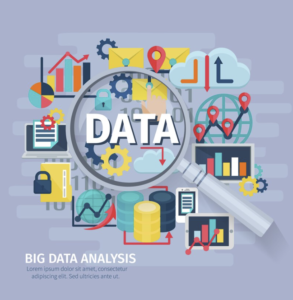Embarking on the journey of Analyzing Big Data requires a nuanced understanding of its significance. Businesses today rely on big data to inform critical decisions, driving innovation and competitiveness. This section explores the pivotal role big data plays in modern enterprises and how data analysis forms the backbone of strategic planning.

Understanding the Significance
The role of big data in modern business
In an era where information is power, big data emerges as the linchpin of success for businesses across industries. It goes beyond mere volume, encompassing the velocity and variety of data generated. The ability to harness this wealth of information empowers organizations to spot trends, identify opportunities, and mitigate risks effectively.
How data analysis drives decision-making
Data analysis transforms raw data into actionable insights, offering a roadmap for informed decision-making. By deciphering patterns and trends, businesses gain a competitive edge. Whether optimizing operational processes or understanding customer behavior, data analysis is the compass guiding strategic choices.
Essential Tools for Big Data Analysis
As the demand for robust data analysis grows, so does the need for powerful tools. Let’s explore some essential tools that have become instrumental in the realm of Analyzing Big Data.
Apache Hadoop: Distributing data processing
Apache Hadoop, an open-source framework, revolutionizes data processing by distributing large datasets across clusters. This technique, known as MapReduce, enables parallel processing, drastically reducing the time required for analysis.
Apache Spark: Accelerating data analytics
Addressing Hadoop’s limitations, Apache Spark enhances data processing speed and efficiency. Its in-memory processing capability allows iterative queries, making it ideal for machine learning and iterative algorithms.
Tableau: Visualizing complex datasets
Tableau simplifies the interpretation of intricate datasets through intuitive visualizations. Its drag-and-drop interface empowers even non-technical users to explore and understand complex data, fostering better decision-making.
Python for Data Analysis: Coding for insights
Python’s versatility extends to data analysis, offering a rich ecosystem of libraries like Pandas and NumPy. Its ease of use and extensive community support make it a preferred language for extracting valuable insights from data.
SAS: Streamlining statistical analysis
Statistical Analysis System (SAS) provides a comprehensive platform for advanced analytics. From data management to predictive modeling, SAS streamlines the entire analytical process, making it a staple in the industry.
Also Read: Big Data in Cloud Computing: Unleashing the Power of Data
Challenges and Solutions in Big Data Analysis
While Analyzing Big Data opens doors to unparalleled insights, it comes with its set of challenges. Understanding and addressing these challenges is crucial for ensuring the success of big data initiatives.
Overcoming scalability issues
As datasets grow, scalability becomes a pressing concern. Scalable solutions like cloud-based platforms and distributed computing frameworks help organizations manage increasing volumes of data efficiently.
Ensuring data security and privacy
The influx of data raises concerns about security and privacy. Implementing robust encryption, access controls, and anonymization techniques ensures the protection of sensitive information, fostering trust among users.
Analyzing Big Data: Techniques and Tools in Action
The theoretical understanding of Analyzing Big Data finds its true value when applied in real-world scenarios. Let’s delve into some notable applications and success stories that underscore the transformative impact of these techniques and tools.
Real-world applications
From healthcare and finance to marketing and logistics, the applications of big data are diverse. In healthcare, predictive analytics helps identify potential disease outbreaks, while in finance, data analysis informs investment decisions.
Success stories from leading industries
Companies like Amazon, Google, and Netflix owe their success, in part, to their adept use of big data. By analyzing user behavior, these giants personalize recommendations, enhancing user experience and driving customer satisfaction.

Also Read: Big Data Analytics Tools: Navigating the Seas of Information
FAQs: Decoding Analyzing Big Data
What are the primary techniques for analyzing big data?
Analyzing Big Data involves various techniques, including data mining, machine learning, pattern recognition, predictive modeling, and text analytics. Each technique serves a unique purpose, collectively providing a comprehensive approach to data analysis.
How do tools like Apache Hadoop revolutionize data processing?
Apache Hadoop revolutionizes data processing by employing a distributed computing framework known as MapReduce. This allows large datasets to be divided and processed simultaneously across clusters, significantly reducing processing time.
What challenges does the big data industry face today?
The big data industry faces challenges such as scalability issues, ensuring data security and privacy, dealing with varied data formats, addressing the skills gap, and embracing cloud-based solutions.
Can small businesses benefit from big data analysis?
Yes, small businesses can benefit from big data analysis. With the right tools and techniques, even modest datasets can yield valuable insights, aiding in strategic decision-making and enhancing operational efficiency.
How does machine learning contribute to data analysis?
Machine learning plays a pivotal role in data analysis by enabling systems to learn from data and make predictions or decisions without explicit programming. It enhances the accuracy and efficiency of analytical processes.
Are there risks associated with relying on big data for decision-making?
While big data offers invaluable insights, there are risks such as data security concerns, potential biases in algorithms, and the need for skilled personnel. Organizations must navigate these challenges to make informed decisions.
Conclusion
As we navigate the evolving landscape of big data, continuous learning and adaptation are key. Analyzing Big Data: Techniques and Tools not only transforms the way we understand information but also propels us into a future where data-driven decisions shape the course of success.


